Tourism Product Concept: Tourism product is usually as the amount of psychological and physical satisfaction it offers or delivers to the tourists when they are travelling to a new place or are on the way to a given destination it can be both domestic and international. Tourism products are more concerned towards services and facilities produced to fulfil the requirement of the consumers or the tourists.
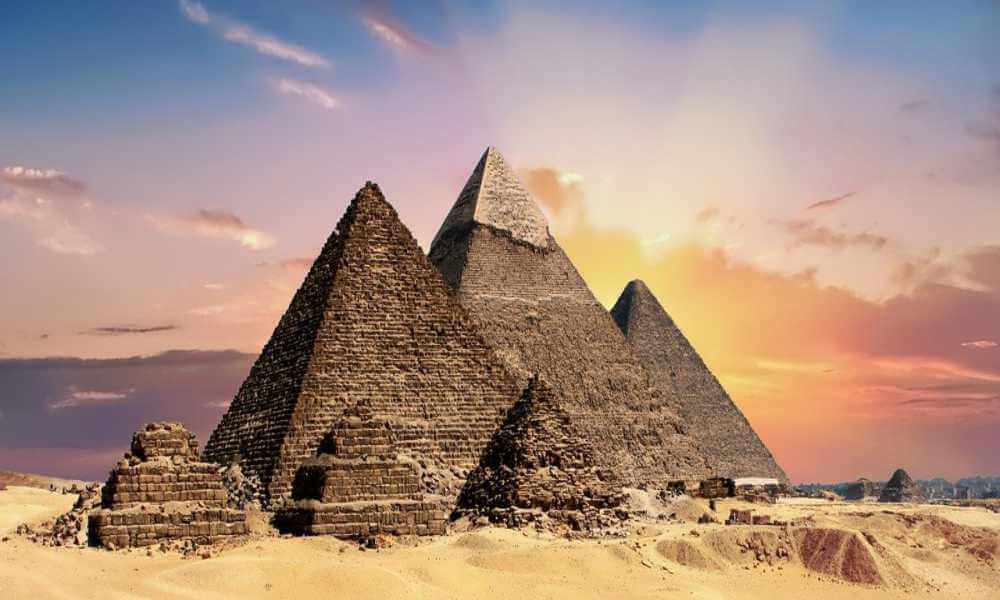
Tourism product concept may be combined or amalgamated in nature i.e. the various attraction at a given destination, transportation facilities and other entertainment facilities result in full or 100% customer satisfaction. every element in tourism product is delivered by single supplier service or facilities like tour operator, airline companies, hotels and resorts etc. tourist products can be studied on the basis of four important elements viz. attraction, accessibility, accommodation and amenities.
Meaning of Tourism Product
Tourism product is a group of various components and elements which are combined together to satisfy the needs and wants of the consumers. The product in tourism industry is the complete experience of the tourist from the point of origin to the destination point and back to the origin point. The product in Tourism may be defined as the ‘sum total of physical and psychological satisfaction it provides to the tourist from the origin point to the destination and during their travelling route’.
Also read Tourism
The raw material in tourism industry is the natural beauty, Climate, History, Culture and people of the destination and some other important elements are the existing facilities or the infrastructure such as water supply, electricity, roads, transport, communication, services and other ancillary services. If any of these elements get missing, then it will completely destroy the whole experience of the tourist. Tourism products are offered in the market with some cost i.e. money. A Product could therefore be defined by its three characteristic:
- The product must be offered
- It should satisfy some need or needs of the customers
- It should be exchanged for some value
Also read more about Tourism Product Life Cycle
So, we can say that if the Tourism Product i.e. the sum total of a country’s tourist attractions, transport systems, hospitality, entertainment, and infrastructure is well designed and developed and then offered to the tourist this will ultimately result in consumer satisfaction. Tourism products are nothing but various services offered to the tourists, and falls under the category of service product. Tourism product is the prime reason for tourist to choose a destination. Tourism product helps in earning revenue for the destination. So all the tourism product should be properly preserved and promoted
A) Attraction
Attraction is the first and the most important element of tourism product, until unless there is an attraction, then only a tourist would be encouraged to visit a particular place. Attraction is a very important element as it determines the choice made by a tourist to travel to a particular place rather than another place or destination. An attraction can be of different types such as historical buildings and monuments, areas of archaeological interests, mountains, beaches, resorts, national parks, wildlife sanctuaries, Flora and Fauna, events like conferences, exhibitions, sports meet, world cups, music and art festivals etc.
You may may be interested to read about Aviation Industry
Demand for tourist products can be determined on the basis of upcoming trends in the market or current fashions. Present fashion in the market are helpful for analyzing and fulfilling the demand for different tourism products (which can include attractions, services and other amenities). Tourist visiting to hill stations for their natural beauty and panoramic views may choose to opt for some other destination due to current trends in the market and sometimes change in the fashion.
You may read History of Travel and Tourism
Peter has sketched up a list of the different attractions that are important in the tourism. Though, the attractions of tourism are, to a very large amount, geographical in character. Location and accessibility (whether a place or coastal or inland position and the ease with which a given place can be reached) are essential. Those who wish to seek wilderness and adventure may think of physical space at a destination.
Landscape or scenery is a mix of landforms; water and flora and has a beautiful and artistic value. Weather conditions, especially in relation to the amount of sunshine, temperature and precipitation (rain as well now), are of unique importance. Animal life might be a significant attraction, first in relation, to bird watching or viewing game in their natural habit and second, for sports purposes, e.g. hunting and fishing. Human’s influence on the natural landscape in the name of his settlements, archaeological remains and ancient monuments and is also a main attraction. Finally, a range of artistic elements folklore, artistic expressions, ways of life etc. offer valued attractions to large tourists.
Also read more about Tourism Product Life Cycle
B) Accessibility
Accessibility can be defined as means by which a person/tourist can travel or reach to particular place or destination. Tourist attractions can be of different types some may be accessible or some may be not by a mode of transportation. A tourist always looks up to a mode or means of transport in order to reach that particular place/attraction. Mode of transportation can be a coach, a car, an aeroplane, a ship or boat and a train that can enable or help a tourist to visit his desired destination. There are certain destinations which are not accessible by different modes of transport or inadequate transportation services, these destinations then turn into of a little value.
Generally the tourist attractions that are situated close to a tourist generating area or market and are connected by a proper network of effective modes of transportation, experience a large number of tourist visits. Distance between the places of origin to the desired destination plays a crucial role in the movement of tourists and effect their choices in destination selection, proper connectivity between places or destination can act as motivation factor for tourists to visit a particular destination or place. Long distance destination increases the cost of travel for the tourists which somehow restricts the limits of different tourists travelling across places.
Also read more about Tourism Product Life Cycle
Time constraint and cost play a crucial role in the movement of tourists across the globe. An instance can be that of India. Almost two and half million tourist visitors for a country of the size of India may seem to be rather insignificant. Though, we see at certain things like the country’s distance from the affluent tourist markets of the world such as Europe, United States, Japan, Canada and Australia, one may determine that the long distance is one of the reasons liable for low tourist visits. It costs a tourist from these nations, quite a large amount, to travel to India for a vacation. It has been listed before that North America and Europe last to be major markets creating and getting areas for international tourist arrivals, accounting for as much as 70% and 20% respectively, of inbound tourist arrivals. Easy-going accessibility, thus is a main aspect for the development and growth of tourist arrivals.
C) Accommodation
Lodging and other services balance the tourist attractions. Accommodation is very crucial and plays a central role and is very essential requirement of every tourist destination. As per the definition given by UNWTO, a person travelling to a new place from his place of origin must spend at least 24 hours at a particular destination so then only he/she would be considered a tourist. This tells about the importance of accommodation facilities at a different destination.
You may may be interested to read about Aviation Industry
The demand for accommodation has always been there since ages. Therefore, the demand or the need for accommodation is met through variety of facilities. In the accommodation sector, the range and type of lodging is a bit wide-ranging and has experienced through different stages in the last couple of years. There is a decrease in the need for small hotels, boarding houses and other accommodation facilities. Large hotel chains have started to increase their share at famous tourist destinations and big metropolitans throughout the globe in more traditional holiday and sea- side resorts in Europe and elsewhere, large hotels are keeping their share of holiday resorts.
Also read more about Tourism Product Life Cycle
In the past few years, certain changes have arisen in the accommodation sector and the type of accommodation has totally transformed. The demand for non-traditional and informal types of lodging facilities have increased to a great extent. Holiday villages and concepts like home stays, condominiums and youth hostels are the current trends in the accommodation sector and popularity of these types of accommodations has increasing in the present times. Accommodation in itself has become an attraction in the modern times.
You can also read History of Travel and Tourism
In fact, a big group of travelers visit a specific town or destination simply since there is a first class luxury resort and hotel that offers outstanding facilities sand services for the entertainment of tourists. Few nations like Holland, France, Switzerland, Belgium and Austria have achieved a reputation for offering exceptional lodging with lavish food. Countless hotel companies away in different nations, specially the resort hotels have earned a status for their exceptional services, cuisines and other entertainment facilities. The French government for example, overlaid the way for tourist expansion of Corsica by introduction of a large hotel growth agenda.
D) Amenities
Every tourist travelling to a new destination desires for world class facilities and services. In order to fulfill their demand huge efforts are made by the industry. High quality facilities are important aid to every tourist destination or center. For a coastal resort, services like swimming, boating, yachting, surf-riding and other amenities like recreation, dancing and other entertainment and amusement services are very essential for each and every tourist destination/center. Facilities can be of 2 kind’s natural, i.e. sea-bathing, beaches, possibilities of fishing, opportunities for trekking, climbing or viewing etc. and man-made, i.e. different kinds of entertainment facilities that can cater to the unique requirements of the various tourists. Outstanding beaches, sheltered from sunshine with palm and coconut trees and providing good bathing conditions makes a very goo the tourist center. Various other natural facilities like large water for the purpose of cruising or the chances for hunting and fishing are equally very significant.
You may may be interested to read about Aviation Industry
Characteristics of Tourism Product
Tourism products are mostly service goods that have different types or features. For instance, in business tourism management and planning are the services provided by different large convention centers and hotel chains. Various fair and festivals are the events that are provided for the entertainment and amusement only at a given time of the year and these are usually variable and perishable. In country like India numerous traditional/ancient attractions in the form of music and dance can be watched and experienced. There are different natural products which are been consumed by the tourist travelling to India like flora and fauna, wildlife. Following are some of the features and characteristics of tourism products:
a) Intangibility of Tourism Product
Unlike a physical product, say, a train or television, there is no handover of ownership of products is included in tourism. The goods or products in tourism cannot be consumed or demonstrated before purchasing it. Instead, some installations, amenities, items of equipment are available for a certain or fixed period pf time and for a particular use. For instance, a hotel room is offered or provided for a given time frame or a seat in a train is provided for a couple of hours of the journey.
b) Psychological
A tourism product is offered to provide or offer certain level of satisfaction to the consumers or tourist. A person/tourist acquires experience with the consumption of different tourist products. Experiences derived while interacting to new places, people and environments helps in the encouragement of potential customers and helps in attracting them to consume the products offered to the market.
Read more about Hospitality
c) Highly Perishable
Usually a tour operator or a travel agent offer or sells various tourism products to the market, which are perishable in nature and cannot be stored or sustained for a longer time frame. Production of the products and services is only possible if there is a demand and the customers are actually present and if the customer buys the product it cannot be blocked, disturbed or customized. If the product is not consumed on time or is unused the chances are lost which means, if a tourist doesn’t buy the flight ticket on a given date, the chance at that time is lost or can say the validity of the seat is expired or is left unused. The reason can be heavy discounts or offers given by the airline company on the given date or during off season.
You may may be interested to read about Aviation Industry
d) Composite nature of tourism Product
A tourism product is never offered or produced by a single enterprise there is an involvement of different parties (viz travel agent, hotels, airline company, tour guide etc.) when compared to a manufactured product. There is a involvement of various parties in providing or manufacturing a complete tourist product. The product shields broad experience of a holiday to a specific destination. And numerous suppliers and providers that supply to create this experience. For example, a hotel provides a food and rooms, travel agent makes booking for sightseeing and stay at different places, airline and rail provides seats etc.
Also read more about Tourism Product Life Cycle
e) Unstable Demand of Tourism Product
There is a problem or one can say a challenge for tourism products as tourism products are influenced by the seasonality, economic, political factors. For instance, there is a demand for the hill station in the summer season as people like to travel to cold places mostly places likes Manali, Shimla, Nainital, Mussorie etc. whereas the demand for coastal areas like Goa rises in the winters. There are different times of a year when there is a demand for a particular destination than other destinations. This is the time when there is a huge tension on the hotel bookings, transport system, the employment etc.
f) Fixed supply in the short run
Tourism product similarly as the factory-made products cannot be transported to the final consumers, the consumers have to go to the products offered to them. Product development is done on the basis of analysis of the taste and preferences, behavior, dislikes and likes of the consumers, so that the expectations and realities of the consumers. Therefore, the supply of the tourism product is limited in the short run and may be maximized on a long term basis depending upon the increasing demand pattern of the tourist product.
g) Absence of ownership in Tourism Product
Tourism products have absence of ownership. For instance, when you buy a product say a bike or a car, the possession of the same is reassigned to you, but when one rents a cab, he/she only buys the right to be transferred from one place to another, you neither own the driver nor the cab. Similarly, in case of tourism products like airline tickets, train tickets or a hotel room can be used for given time frame but not owned. Tourism products can only be purchased for using but the ownership of the same stays with the provider of the service or the product so, an Opera show can be watched but the performer cannot be kept.
h) Heterogeneous nature of Tourism Product
Tourism is not a uniform product. Similarly, tourism product is not same, since they tend to change or vary in terms of quality and standard with the passage of time, unlike a television set or any other factory-made product. A flight or a tour package cannot be the same at all times. The reason behind the changing nature of the tourism products is a service and services are customers/consumer oriented. So there is variability in tourism products as all humans are not the same and vary in terms of their behavior, taste and preferences. For example, all workers working in a hotel cannot give the same excellence of facility and the same worker might not perform equally in the morning and evening. Therefore, the services cannot be uniforms or homogeneous.
Also read more about Tourism Product Life Cycle
i) Risky
Tourism products are first purchased and later on consumed that is why there is a high level of risk involved in purchasing before the consumption of the products. An element of chance of risk is always there in the process. For instance, a movie might not be as entertaining as it promises to be or a summer vacation in Goa may be disappointing due to bad weather or heavy rains.
j) Marketable
Tourism products are marketable at different markets. Firstly, both the regional and national organizations involve themselves in catering the potential customers/tourists to travel to different region/destinations across the country. Secondly, the individual firms are trying to market their own tourism products in order to cater potential customers.
Read more on Aviation Industry in India
Read more on Tourism Economics
Tourism Product Concept Tourism Product Concept Tourism Product Concept Tourism Product Concept


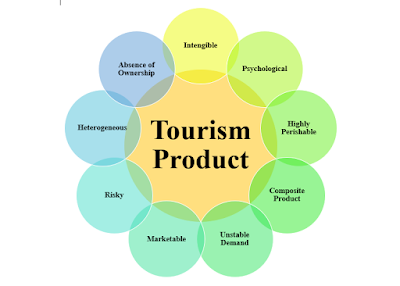
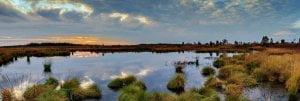
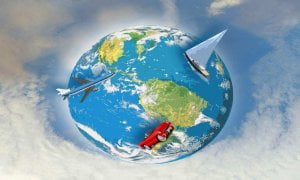
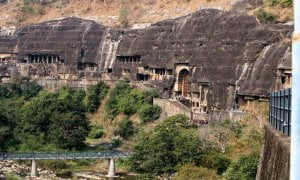

Pingback: Which of the following is a characteristic of the tourism product? – AnswerParadise.net